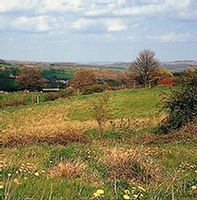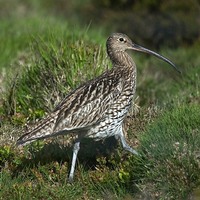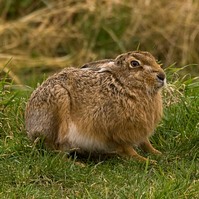

Biodiversity
Action
Plan
Key features of grassland habitat for wildlife species
In Barnsley, the more species-rich Acid Grassland is found on nutrient-poor soils on sandstone edges, on slopes where soil has been leached of nutrients, and where there has been mining, quarrying and other such activities.
The acid grassland which is widespread in the moorland exists largely as species-poor rough grazing.
Species supported by grassland
Birds. Acid Grassland supports Lapwing, Grey Partridge, Curlew, Snipe and Skylark, as well as Starling, Linnet, Meadow Pipit, Kestrel and Barn Owl. Golden Plover as well as Curlew forage in moorland fringe grassland pastures
Mammals. Voles, mice, shrews, Brown Hare, Hedgehog, Mole
Reptiles / Amphibians Grass Snake, Common Lizard, newts,
Invertebrates. A wide range of invertebrates including solitary bees and wasps, bumblebees, butterflies, moths, and grasshoppers. Wall Brown and Small Heath depend on grasslands and Green Hairstreak on the dwarf shrubs found there.
Plants of Acid Grassland. Typical grasses include: Common Bent, Heath Grass, Mat Grass, Sheep’s Fescue, Sweet Vernal Grass and Wavy-Hair Grass. Mosses and/or lichens are sometimes prominent.
Typical wildflowers include Betony, Bitter-vetch, Common Centuary, Common Stork’s Bill, Devils-bit Scabious, Harebell, Heath Bedstraw, Heath Speedwell, Lady’s Bedstraw, hawkweeds, hawkbits, Sheep’s Sorrel, Tormentil, violets and Wild Strawberry.
Sites often include dwarf-shrubs such as Bilberry and Heather species and some acid grassland sites form part of a mosaic.
Acid Grassland priority habitat is generally dominated by fine-leaved grasses; Mosses and lichens are sometime prominent. It is managed primarily by grazing.
In areas where more species-rich Acid Grassland exists, it is generally dominated by Sheep’s Fescue and Common Bent, with a good proportion of broadleaved plants and perhaps dwarf-shrubs.*
Some sites may be less species-rich, dominated for example by Wavy Hair-Grass; however, Acid Grassland priority habitat is a scarce resource and these sites are likely to be still of value.
Often the value is in the range of wildlife species it supports and this may depend on features such as tussocky areas of longer grass to provide shelter and areas of shorter grass for some species to forage.
Lapwing is found in shorter swards whereas Curlew usually select higher vegetation. Brown Hare prefers shorter vegetation for feeding at night and more cover for resting in the day.
Biodiversity within Acid Grassland is often also increased by the presence of such areas as impeded drainage, springs and ditches or indeed some bare ground, boulders and dry stone walls.
A range of grasses provide larval food plants and shelter for over-wintering for invertebrates such as butterflies and moths.
Some invertebrates species such as mining bees require bare ground and others like the Wall Butterfly require places to bask.

Acid Grassland Features



Priority Acid Grassland characteristics
At least two of:
- A high cover of wildflowers and sedges (30-40% or more) excluding white clover, creeping buttercup and injurious weeds
- A species-rich sward of flowering plants and fine grasses, (≥15 species /m2)
- A low cover of rye grasses and white clover(less than 10%)
Assessing BAP Habitat: Acid Grassland
Semi-improved, moderately species-rich acid grassland has two of 9-15 species/m2, 20-30% wildflower and sedges cover, and <30% rye grasses and white clover. Assessing grassland: Semi-improved grassland.
From Natural England Assessing Priority Habitat TIN110. See also Magnificent Meadows How to identify different types of grassland, based on the same publication.